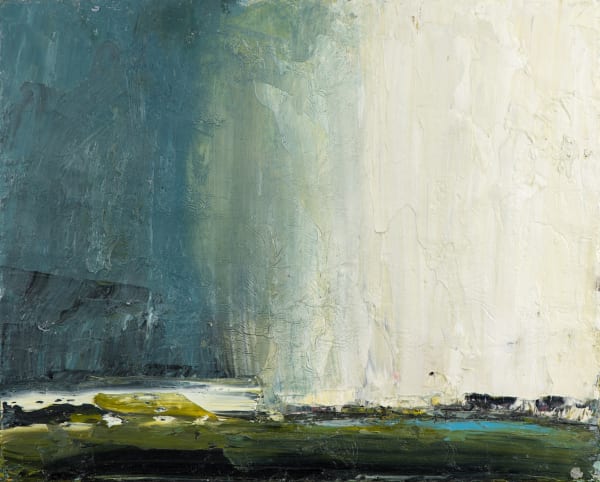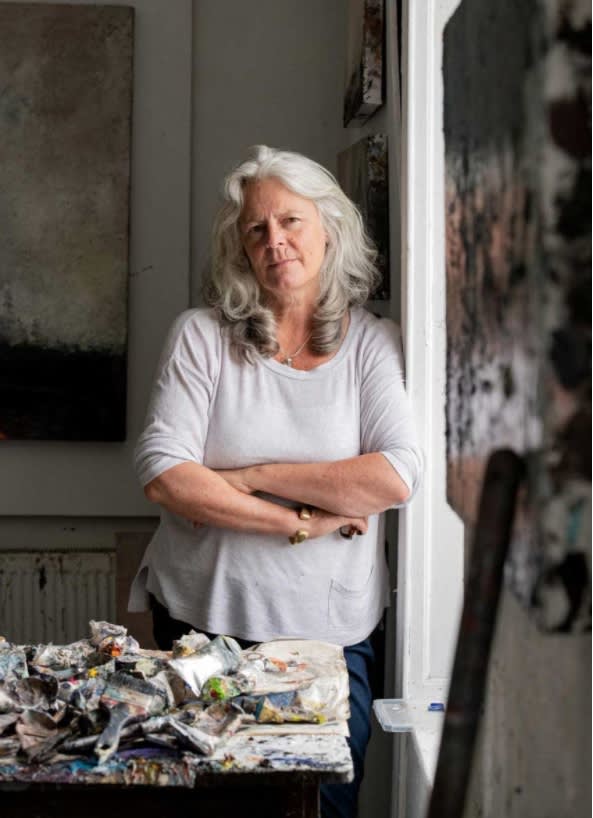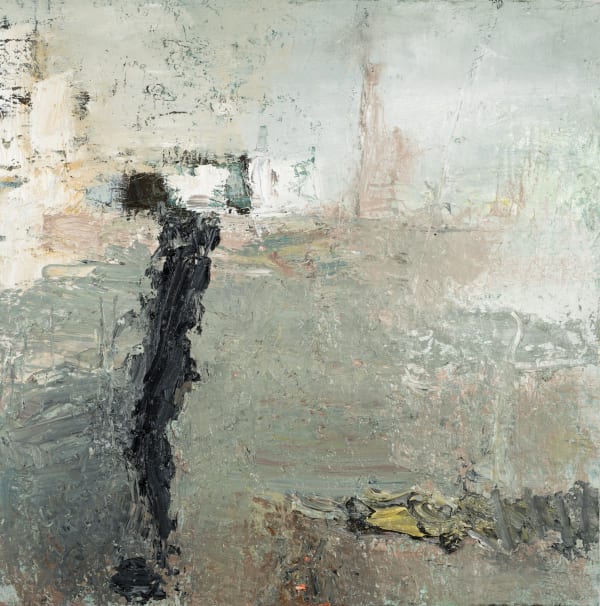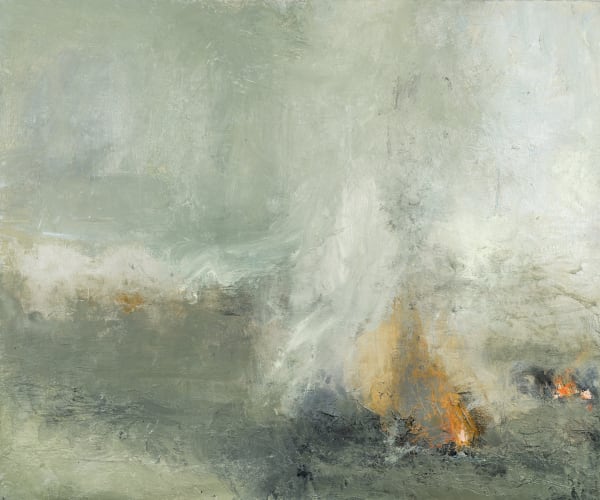What is the significance of the title of your new exhibition “Facing North”?
I was looking for a title that could sum up the work I had been doing before and after my trip to Iceland. The fact is, I live and work facing north, and as someone for whom light is important, it can be challenging at times to feel light restricted. Also, my Father died at the end of December, so the winds of change were very present, which tied the “Facing North” concept both geographically and psychologically together, during a time when I was facing familial adjustments and also the varying alterations that have affected everyone because of the pandemic.
How do you define your own work?
My work could be described as being semi abstract, although a painting will start without a definite plan and will change and evolve until there is some form of resolution. I try to pare back the surface so that it becomes more an essence of something; light, place, meaning, so the abstraction comes about through that process. I’m interested in paint as the physical medium to explore ongoing shifts and changes that are taking place around me over time; atmosphere is embodied in that, and also references to elements within landscape, because I am attuned to landscape and the seasons, having lived on farms all my life.
Tell us about your residency in Iceland …
I had an interesting residency at NES, in Skagaströnd, a remote fishing village in the northwest region of Iceland. The studio was based in an old fish factory right beside the sea and the town has a Museum of Prophecy, which was a great draw to the artists in residence! Somewhere in the cliffs, on top of the Prophetess Mountain [Spákonufell], which towers over the village in Skagaströnd, is an enormous treasure chest loaded with valuables, which has never been found. It was put there by ?órdís the prophetess many centuries ago, so I’ve included a small painting of ?órdís because she is definitely a feminine icon in those parts. I have also included a couple of paintings based on the harbour, because I walked past it every day on my way to the studio.
One of the most important community events in Iceland is The Rettir, the annual gathering of sheep and horses, which takes place in mid-September before winter sets in. The community of farmers and helpers ride out to the mountains on horseback, no matter the weather on a prearranged day, to bring the animals down en masse. It’s spectacular to encounter and I felt privileged to attend and bear witness to it all. There is a short clip of it on my Instagram highlights.
These things soak in, like the wind and the rain and the shifting light, and they come back to mind when least expected, through the medium of paint in the solitude of my working space. The Facing North painting began shortly after I returned from there, with the place still fresh in my mind.
You are self-taught – how and where do you work?
I work from my studio, on our farm in Cork, which is north facing with an outlook to fields and many trees. I find it reassuring to see the fields bearing the marks of the seasons, and of late especially during this pandemic, I appreciate that even more. I work from an inner reference point, without photographs or other supporting material, and I don’t work from sketches, as I prefer to work things out as I go. It’s a process. I use a camera to record the work as it progresses, and sit down in the evening at my computer to study the day’s work. The most valuable advice I ever got was to trust the paint. When I’m struggling with it advice like that is invaluable. Often the surface that is proving difficult will end up being the one that has a more interesting conclusion.
Do you have any mentors or muses?
When I was six, our Irish teacher Colm O’Cleirigh, turned a table upside down in class and stood us all inside, taking us on a “voyage” to Tír na Nog. I have never forgotten the feeling that this gave of being on a great adventure.
The act of painting is a culmination of many interwoven threads of memory and experience, and is a consuming process, so there’s no room to engage with the work of others, no matter how accomplished. You’re processing something in your mind, which you then have to represent in a different form; fleeting influences would be subliminal. The respect I have for all forms of art and creativity in general, and the desire I have to make art has been encouraged by appreciating the work of others. I was talking with Mark Ewart about this idea recently and remembered encountering a Hughie O’Donoghue painting many years ago in a catalogue and feeling that I was witnessing a kind of universal truth, visually expressed so convincingly with paint, so for me that’s a mystical thing. At Newtown School Waterford, I often passed by a Gerard Dillon painting of a clown, and was always struck by the crosses for eyes. I was unsettled by it, but I found it captivating also.
Do you have any favourite artworks from the current exhibition?
I can’t say I do. I’m trying to make work that expresses something words cannot and while every painting starts with a blank canvas and takes time to bring to conclusion, I feel satisfied if I can look at the work and feel it communicating something back to me. There is a tentative emergence of a figure in some recent work. Perhaps this is an attempt to mark a particular passage of time. One painting depicts a mudlark searching through mud at low tide for objects of interest or value. I have always enjoyed that pursuit, so perhaps I am merely searching through paint for that which holds meaning.
Need to Know: “Facing North” by Carol Hodder opens at Solomon Fine Art, Balfe Street, Dublin 2 on Friday, September 4 – 26; www.solomonfineart.ie.
Images courtesy of Rob Lamb; artist photo courtesy of Dora Kazmierak







